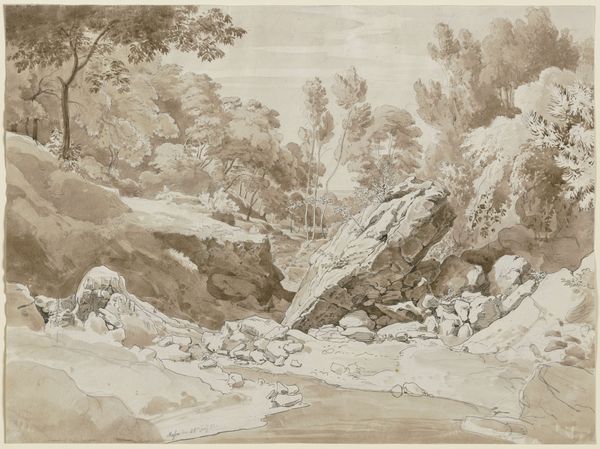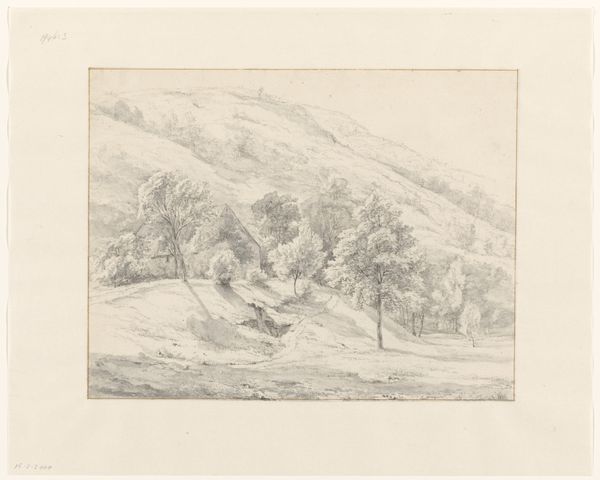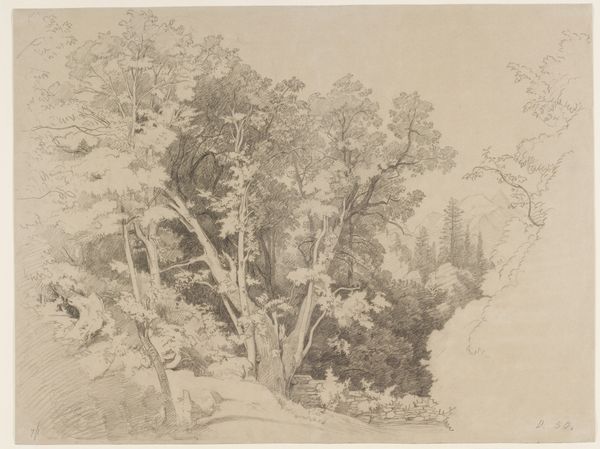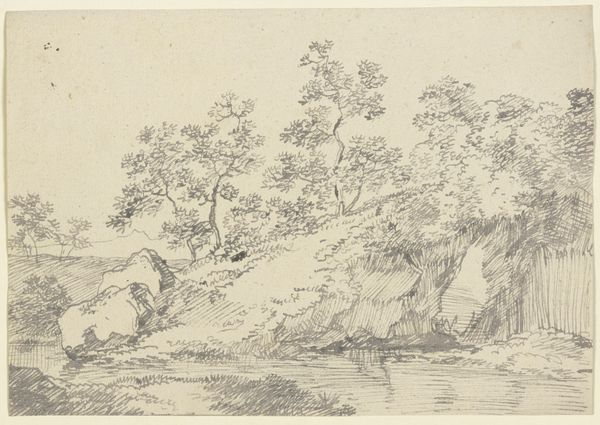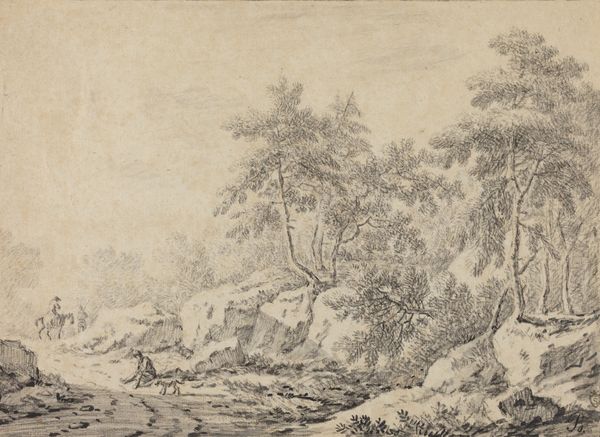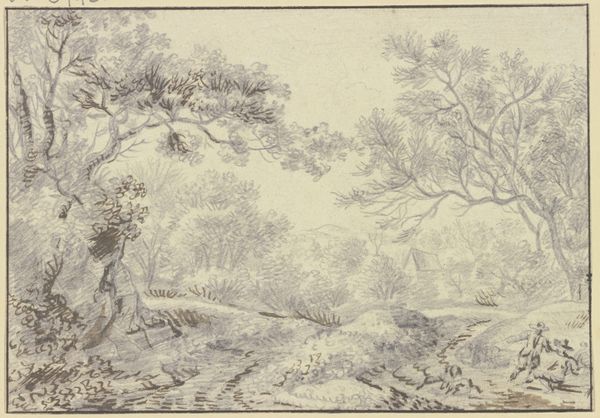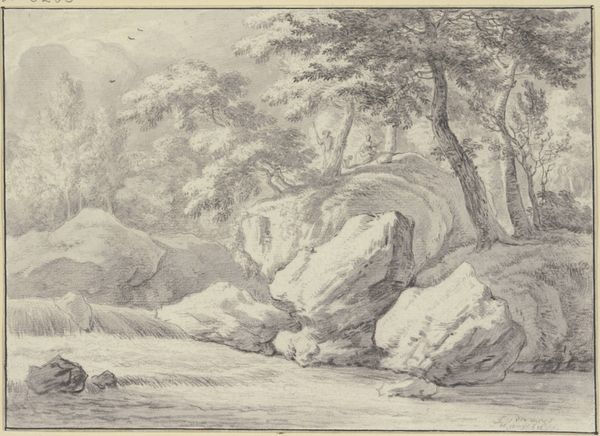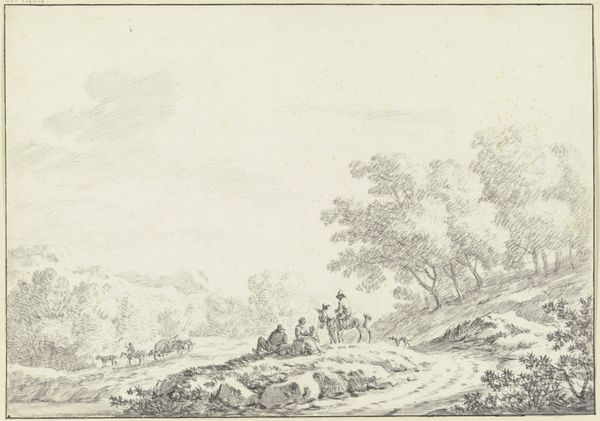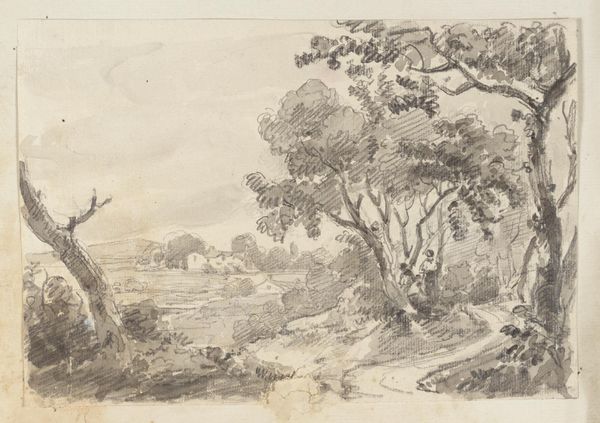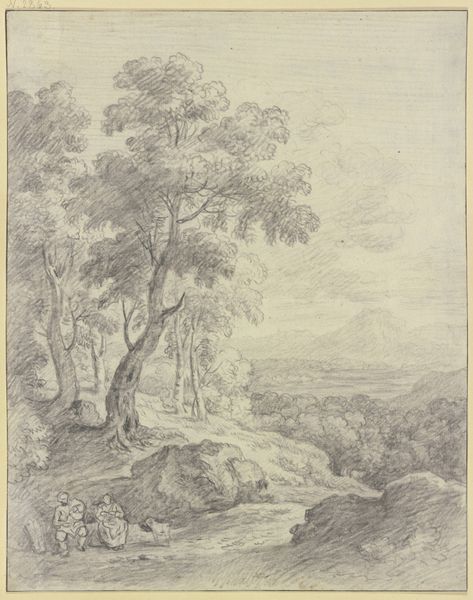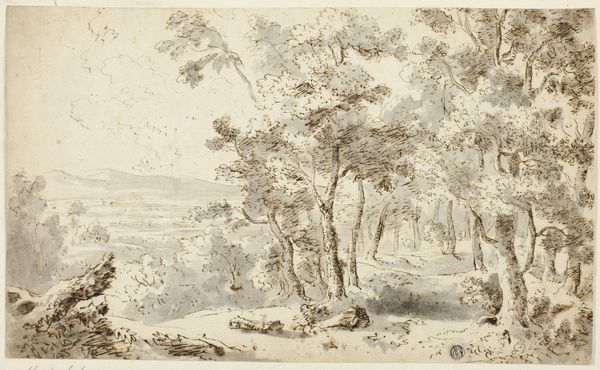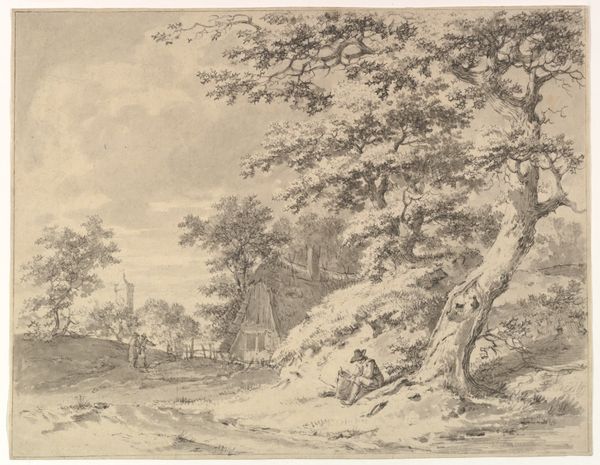
Copyright: Public Domain
Curator: Ah, this ink drawing, "Fels- und Baumpartie bei Massa," or "Rocks and Trees near Massa" if we’re keeping it simple, was captured by Ernst Fries between 1822 and 1825. You can find it here at the Städel Museum. Editor: It feels so still, almost a hushed reverence. The monochromatic palette, those soft greys and browns, it's like looking at a memory through a sepia filter. Very dreamy. Curator: Absolutely, that tranquility aligns beautifully with the Romantic movement’s emphasis on nature's sublimity. The loose washes and detailed linework definitely pull you in. Editor: You know, what’s fascinating to me is how Fries balances that almost chaotic arrangement of rocks in the foreground with this serene, almost classical landscape in the background. There's a real tension there. Was he perhaps exploring ideas of order versus chaos? Or the untamed vs the cultivated? Curator: I think so, particularly when considered against the backdrop of early 19th-century landscape art, the rise of the bourgeoisie, and their need to experience a sublime Nature… albeit one they could observe and acquire. Also, look how he employs the ink; in some areas, he’s capturing precise details of bark and stone, elsewhere, he's allowing the ink to bleed and blend, suggesting rather than defining form. The effect gives such a sense of air. Editor: Yes, almost as if the rocks are exhaling the scene! And that glimpse of what might be a distant structure…it grounds the image. Places it firmly in the Italian landscape. A little human touch within this wild. But look how deliberately vague. Is that building some feudal lord's castle oppressing people at that time, or some forgotten sanctuary in an ever changing and growing nature. It’s a little statement, hidden and yet grand. Curator: And to view this statement today, within the institutional structure of the museum... how its meaning has shifted again. It underscores the mutable, almost political context, if you will, of any artwork within a historical setting. Editor: What's that quote about a work of art being discovered, and not created? That is it in a nutshell. We see the echo from that ink drawing, reverberate through two centuries of history.
Comments
No comments
Be the first to comment and join the conversation on the ultimate creative platform.
